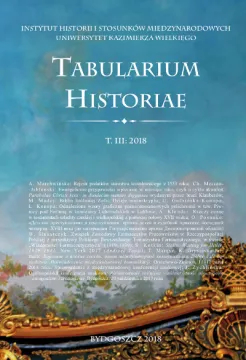Rzeczy cenne w testamentach szlachty czeskiej i wielkopolskiej z pierwszej połowy XVII wieku
DOI:
https://doi.org/10.34767/TH.2018.03.05Słowa kluczowe:
testament, szlachta, luksus, czasy nowożytne, Czechy, WielkopolskaAbstrakt
The basis for the author’s reasoning are wills – 51 acts of the last will of Czech nobility and 105 acts of the last will of the nobility from Greater Poland. They contain, among others, information on the property of the testators, mainly chattel. The beneficiaries of the last wills received mostly money, but some of the wills (1/3 in Czechia, ca. 2/3 in Greater Poland) mention valuable things. Czechs and Poles alike handed down a similar set of goods: jewels (e.g. rings, chains), silverware (e.g. spoons, jugs, cups), clothes of luxurious fabrics (e.g. damask, velvet, satin) and furs (e.g. sable), weapons. Less often we encounter mentions of horses, carriages, hunting equipment. All these things create the habitus of the nobility which was similar in both lands. Differences may be seen above all in the clothing of men. In Czechia bequeathed was clothing which complied to the requirements of the western fashion, while in Poland clothing was under eastern influence – as kontush and zhupan. Complement to the Polish apparel was sabre, while to the Czech – rapier or sword.

